Iran Revolutionary Guard: Today is last for riots
Newslooks- DUBAI, United Arab Emirates (AP)
Iran Revolutionary Guards chief warns ‘today is the last day of demonstrations’ after ‘two more killed’ in Zahedan Calls for change following the death of 22-year-old Mahsa Amini in police custody have been sweeping the country, with at least 270 people killed, and 1,400 arrested, activists say. “Do not come to the streets! Today is the last day of the riots,” Hossein Salami, Iran Revolutionary Guards chief said.
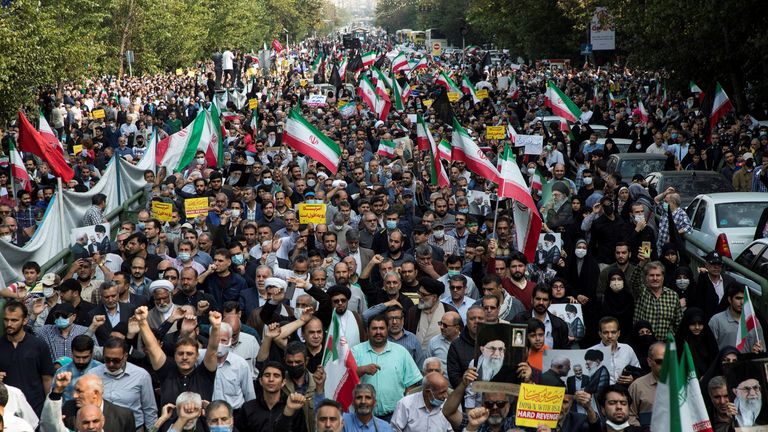
The commander of Iran’s powerful Revolutionary Guards has warned protesters not to leave their homes to demonstrate and that Saturday will be the “last day” of taking to the streets.
His ominous warning comes amid reports that two people were killed after Iranian security forces opened fire on protesters in a southeastern city, on Friday.
Nationwide demonstrations have been taking place, following the death of 22-year-old Mahsa Amini in police custody last month, after being detained for alleged violations of the country’s strict dress code.
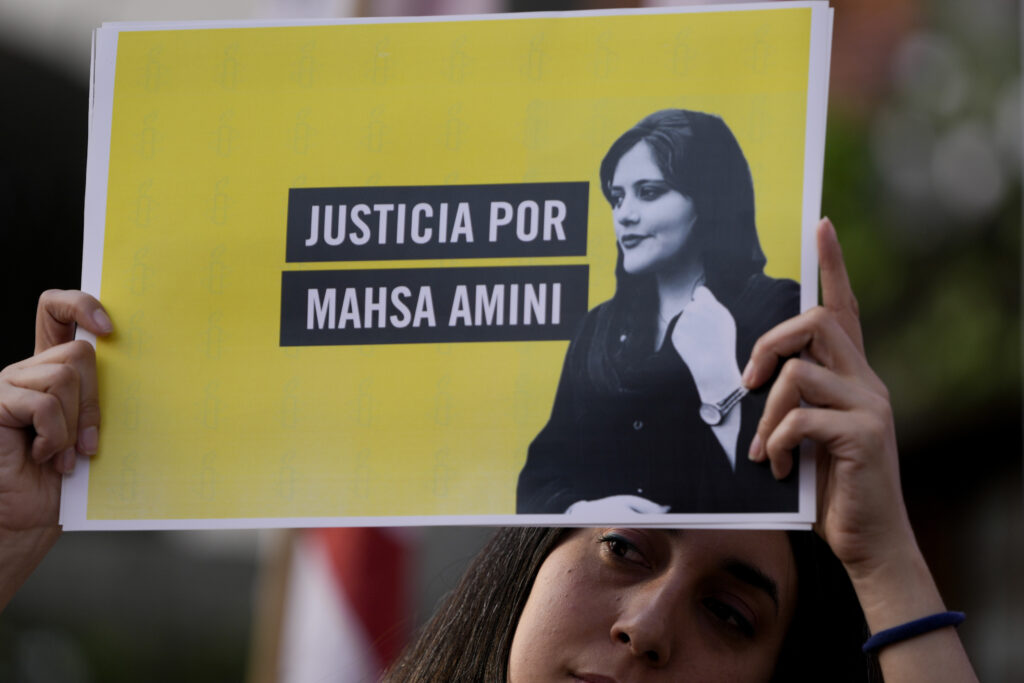
The city of Zahedan, located in Iran’s Sistan and Baluchestan province, bordering Afghanistan and Pakistan on the Gulf of Oman, has seen the deadliest violence so far in the weeks of protests, which passed 40 days last week.
On Friday, soldiers surrounded a key Sunni mosque in an area of Zahedan where residents rallied against the Iranian government, while also shooting at demonstrators, activists said. Videos from the advocacy group HalVash showed demonstrators chanting: “Death to the Basiji”, a reference to the volunteer forces of the country’s paramilitary Revolutionary Guard, which is answerable only to Iran’s Supreme Leader Ayatollah Ali Khamenei.
Iran’s paramilitary Revolutionary Guard issued a new warning on Saturday to antigovernment protesters, even as demonstrations continued in cities and university campuses across the country for the sixth straight week.
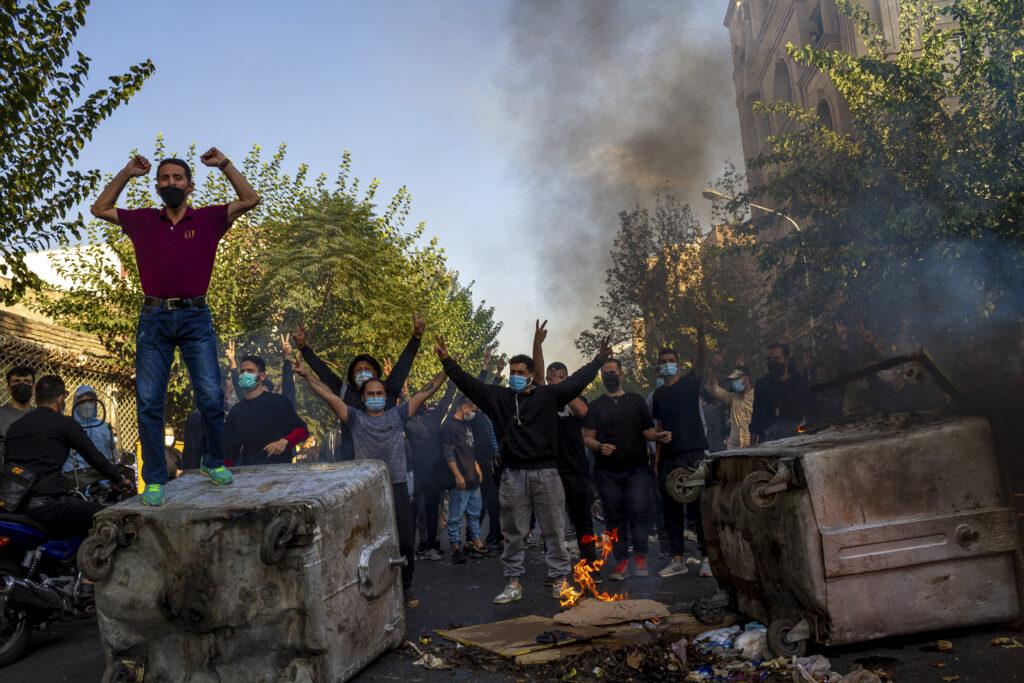
Also on Saturday, authorities reported that the gunman who killed 15 people at a major Shiite holy site in southern Iran earlier this week died in a hospital from injuries sustained during his arrest. Tehran has not disclosed details about the man who carried out Wednesday’s attack on Shah Cheragh in Shiraz, Iran’s second-holiest Shiite shrine.
The militant Islamic State group claimed responsibility for the shooting. But Iran’s government has tried to blame the attack on the largely peaceful protests roiling the country, without offering evidence. Amaq, the militant group’s media arm, released a video on Saturday that purportedly shows the Shiraz attacker pledging allegiance to the group.
The nationwide unrest — sparked by the Sept. 16 death of Mahsa Amini in the custody of the country’s morality police — has rocked the Islamic Republic for a month and a half. Amini died after being detained for allegedly violating the country’s strict Islamic dress code for women.
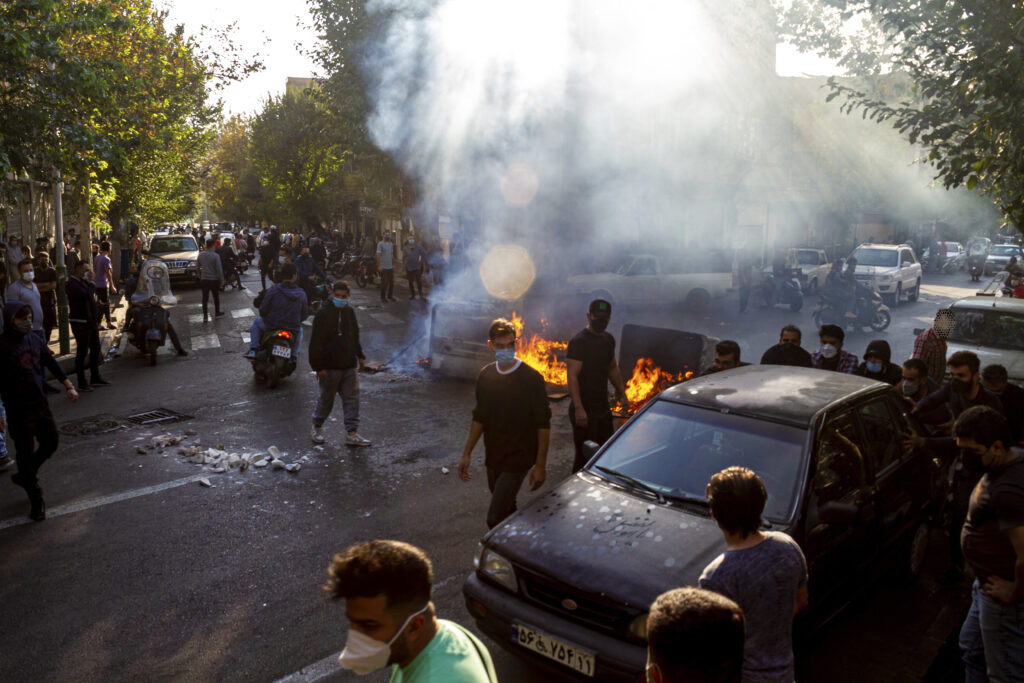
At the funeral for victims of the shooting attack in Shiraz, the chief of the Revolutionary Guard, Gen. Hossein Salami, appealed to Iranians to stop protesting. The Guard and other security forces have violently cracked down on demonstrations with live ammunition, anti-riot pellets and tear gas.
“Today is the end of the riots. Do not go to the streets anymore!” Salami said on Saturday as crowds thronged the coffins of the victims of the Shiraz attack. “We are telling our youth, the minority of you who have been deceived, stop the evil acts.”
He added in the same harsh tone: “This ominous sedition will bring no happy ending to you. Do not ruin your future!”
Despite the threat, student associations reported protests at dozens of universities across the country on Saturday, from the capital of Tehran to the central cities of Isfahan and Yazd. Videos spread online show students chanting for freedom and the end of Iran’s clerical rule.
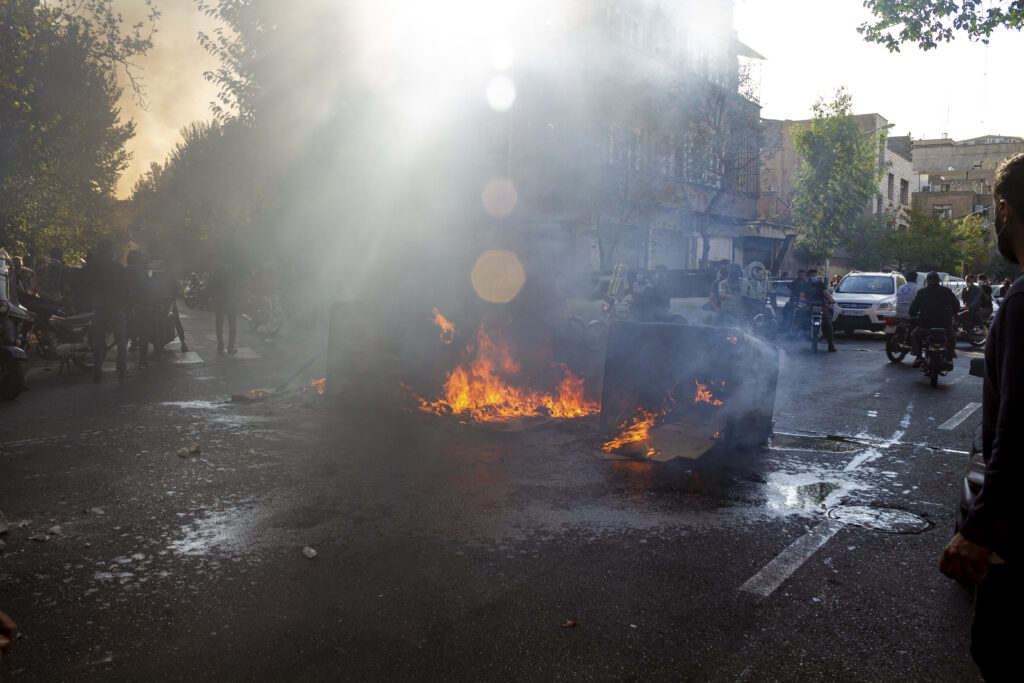
At the Kurdistan University of Medical Sciences in the northwestern city of Sanandaj, the human rights group Hengaw reported that security forces opened fire on protesters, critically wounding a student.
University campuses have become hotbeds of opposition, fueling the protest movement and prompting a harsh backlash from security forces.
The Iranian government has repeatedly alleged that foreign powers have orchestrated the protests, without providing evidence. The protests have become one of the most serious threats to Iran’s ruling clerics since the 1979 Islamic Revolution.
The protests first focused on the state-mandated hijab, or headscarf, for women but quickly grew into calls for the downfall of Iran’s theocracy itself. At least 270 people have been killed and 14,000 have been arrested in the protests that have swept over 125 Iranian cities, according to the group Human Rights Activists in Iran.
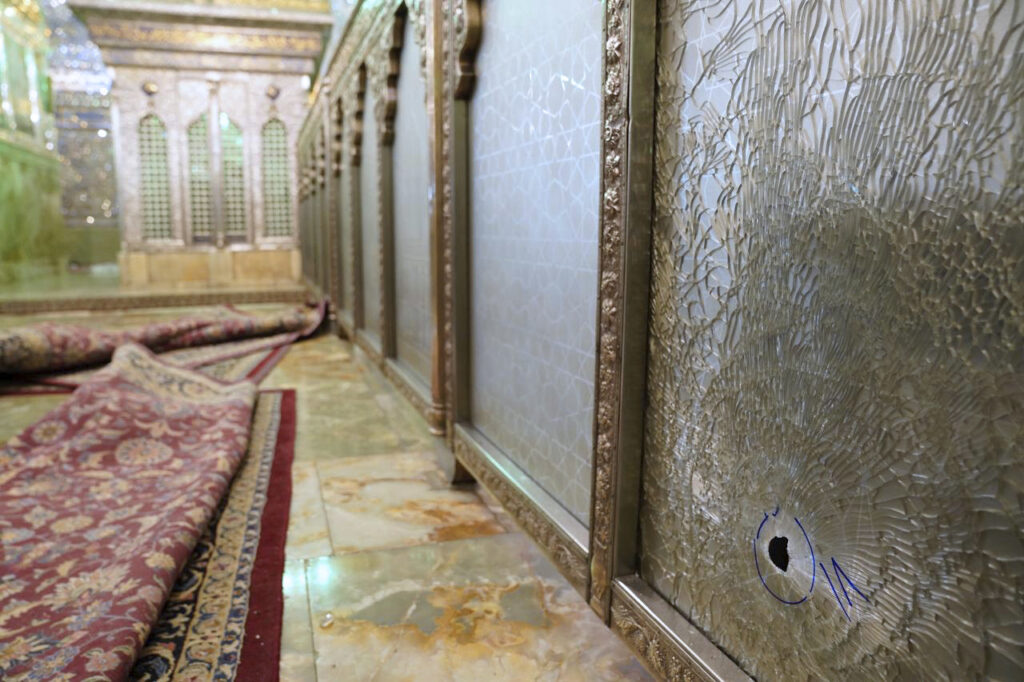
A court in Tehran on Saturday heard the case of several protesters charged with “corruption on earth” — a term often used to describe attempts to overthrow the Iranian government that carries the death penalty. Judicial officials have announced charges against hundreds of people in Tehran and other provinces as they seek to quash dissent.
On Friday, Iranian security forces opened fire on demonstrators in the southeastern flash point city of Zahedan, killing at least two people, according to activists.
Zahedan, in Iran’s long-restive Sistan and Baluchestan province, has seen the deadliest violence in protests so far. Activists estimate that in Zahedan alone, nearly 100 people have been killed since a Sept. 30 rally set off a violent police response.






